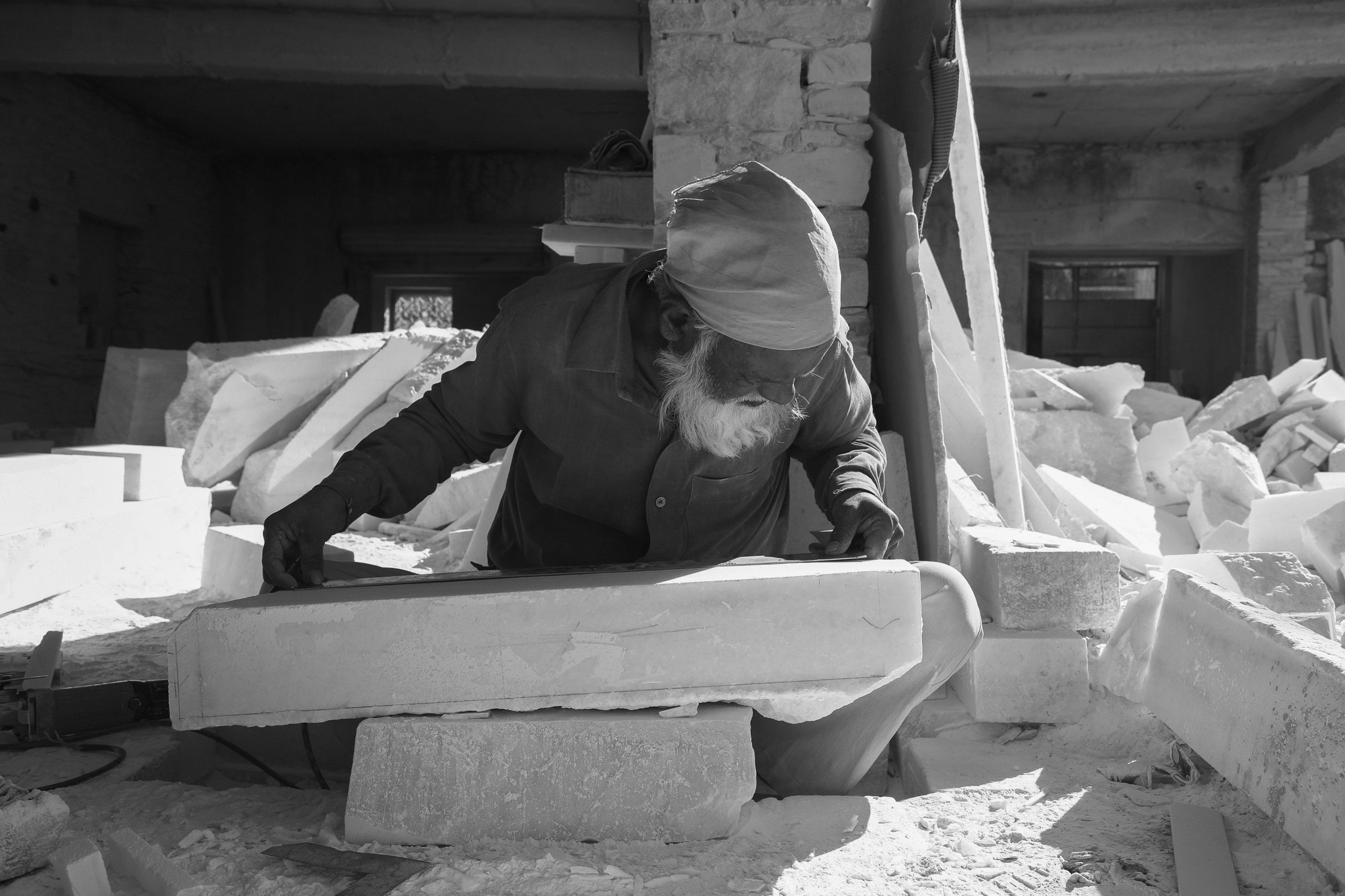The Finest of Arts
Makrana calls out to stonemasons and artisans alike. Generations of skilled craftspeople, led by the Ustaji, have dedicated their lives to the refinement of the skills that were first developed hundreds of years ago by the earliest Makrana community. Their stone of choice, from the small-scale intricate design to the massive architectural masterpiece, is Makrana marble. Beloved by artists, celebrated by art curators, and treasured by art lovers, Makrana sculptures are only limited by the imagination. They are found in homes, galleries, landscape installations, and urban settings, and are integrated into architectural works.

Working the Stone
Makrana marble is uniquely strong and resistant to weathering and colour change, and yet it is relatively easy to work, the close granulation and calcitic nature of the stone lend itself to the most intricate of designs. The stone is also renowned for how readily it accepts a high polish; an incredibly fine finish can be achieved on both the largest scale installations and the smallest of trinkets.
One of the most beautiful and iconic uses of worked Makrana marble is Pietra Dura, also known in the Indian subcontinent as Parchin Kari. This is a decorative art that uses mosaic techniques to inlay marble and other precious stones to create decorative images and patterns. The use of Makrana marble in this type of decorative art echoes the exquisite pietra dura seen in the Taj Mahal, and it remains a popular decorative technique undertaken by highly skilled artisans.

The Ustaji
The skills necessary to work the Makrana stone are handed down from one generation to another in a continuous flow of dedication to the craft. The master craftsmen who are the natural custodians of this process are known as the Ustaji. The Ustaji – masters of stonemasonry – are the custodians of this unique set of skills developed over the course of many hundreds of years. These artisans are the ones who know Makrana better than any other. In addition to their own knowledge, which is gained from countless hours working on the stone, they also have the knowledge of their ancestors who have gone before them and have handed down this knowledge to them as a most precious inheritance. The Ustaji remain the masters of Makrana, and their work has inspired the work of many artists and sculptors who come to the stone in search of the perfect medium through which to express their Art.
Ramesh Pateria (1937-1987) was one of the most revered Indian sculptors, winning many accolades and awards during his illustrious career. Born in Rajasthan, the source of Makrana marble, Pateria chose his native stone as his marble of choice for his sculptures.
Ramesh has received several notable awards for his work, including the prestigious National Award from the Lalit Kala Academy, New Delhi in 1969. In 1982-83, he was given the Shikhar Award by the Madhya Pradesh Government. This richly deserved recognition placed him among the most elite sculptors in the country. Along with these major awards, his work was also recognised at Gujarat State Exhibition, Kalidas Art Exhibition and Madhya Pradesh Kala Parishad, Ujjain.
The work of Ramesh Pateria is defined by strong modern shapes, heavily influenced by the marble itself; the lines of his work often follow the natural lines of colour that flow through the stone. By embracing the natural attributes of the Makrana marble, Pateria melded his exceptional craftsmanship and artistry with a deep appreciation and understanding of the medium. Many examples of Pateria’s work are kept by the National Gallery of Modern Art.

Qissa
Nowhere is the spirit and artistic heritage of Makrana more evident than in Qissa. This labour of love offers people the unique opportunity to feed into the production of their own piece of Makrana sculpture. By melding this historic material with the story of the client, master sculptors can produce individual works of art that feel personal. There is no better way to celebrate Makrana than by showcasing its beauty with one-off fine art pieces that can be treasured for their sentimental value and well as for their intricate beauty. The Qissa initiative is an exciting way for a stone that has such a rich history of its own, to also tell your story, in designs that reflect who you are. A qissa sculpture is a heartfelt gift, a celebration of self, and a family heirloom that reflects the heart of who we are as human beings and our connection to each other and our world.
To know more about Qissa, please visit qissa.com.